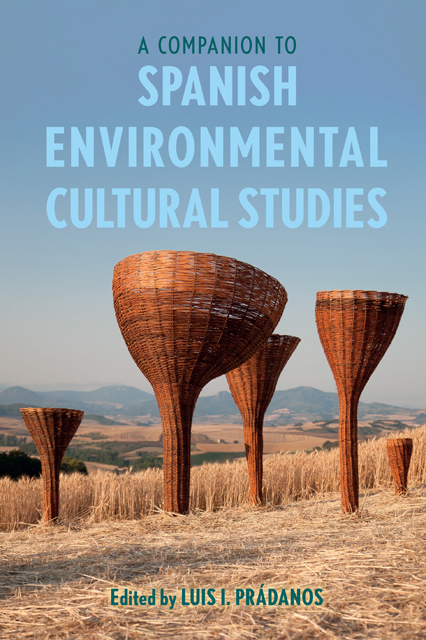Book contents
- Frontmatter
- Contents
- List of Illustrations
- List of Contributors
- Note on the Translations
- Acknowledgements
- Introduction: Spanish Environmental Cultural Studies
- Part I Environmental Cultural History and Political Ecology
- Part II Water and Power
- Part III Ecologies of Memory and Extractivism
- Part IV Animal Studies and Multispecies Ethnographies
- Part V Food Studies and Exploitative Ecologies
- Part VI Ecofeminism
- Part VII (Neo)Colonial and Racialized Ecologies
- Part VIII Tourism and the Environmental Imagination
- Part IX Eco-Mediation and Representation
- Part X Trash and Discard Studies
- Bibliography
- Index
7 - S(h)ifting through the Wreckage
Published online by Cambridge University Press: 08 June 2023
- Frontmatter
- Contents
- List of Illustrations
- List of Contributors
- Note on the Translations
- Acknowledgements
- Introduction: Spanish Environmental Cultural Studies
- Part I Environmental Cultural History and Political Ecology
- Part II Water and Power
- Part III Ecologies of Memory and Extractivism
- Part IV Animal Studies and Multispecies Ethnographies
- Part V Food Studies and Exploitative Ecologies
- Part VI Ecofeminism
- Part VII (Neo)Colonial and Racialized Ecologies
- Part VIII Tourism and the Environmental Imagination
- Part IX Eco-Mediation and Representation
- Part X Trash and Discard Studies
- Bibliography
- Index
Summary
This essay provides an ecocritical reading of the photographic exhibit entitled “Type I (On the Kardashev Scale)” by Catalan multi-media artist Francesc Torres (1948–), part of a larger project shown in the Centro Galego de Arte Contemporánea (CGAC: Galician Center for Contemporary Art) from February 2020 to January 2021, entitled Crebas (Wreckage). Crebas is a Galician term for objects and debris washed ashore after a shipwreck. As the region of Spain on the north-western tip of the peninsula bordering the Atlantic Ocean to the north and west, Galicia has such a long history of shipwrecks that part of its rugged, rocky coast is called the Costa da morte (Coast of Death).
As the detritus left behind by an accident, crebas function as a remainder, and a reminder, of something gone awry. In his exhibit, Torres places in dialogue photographs he has taken of two ruined sites on or near the Galician coast: the wolfram (tungsten) mine in Casaio, located inland in the province of Ourense (see Figure 7.1) and the Caneliñas whaling factory in Gures, directly on the Costa da Morte, in the province of A Coruña (see Figure 7.2). The artist presents these sites as two kinds of wreckage, of crebas, tied to two different, yet interrelated, types of violence. It is precisely in pointing out the interrelation between the violence at work in the history of both sites, and the logic underlying that interrelation, that the power of the exhibit resides. The power of the exhibit, of course, also depends on the very nature of the images, and on the capacity of visual images, as will be explored here, to embody a kind of “critical thinking in sensuous form.”
The mine in Casaio, established by a Belgian company in 1914, was used by dictator Francisco Franco as a concentration camp for Republican prisoners after the Spanish Civil War. During World War II, Franco, despite Spain’s supposed neutrality in the war, allowed Hitler to run the mine and use the wolfram for the German war industry. During that time, the mine was run directly by the German army and the wolfram was used to harden the ammunition and bulletproof the tanks for their war effort.
- Type
- Chapter
- Information
- A Companion to Spanish Environmental Cultural Studies , pp. 88 - 99Publisher: Boydell & BrewerPrint publication year: 2023



